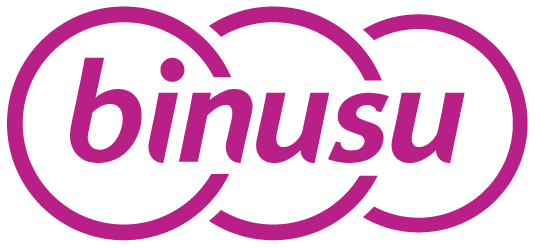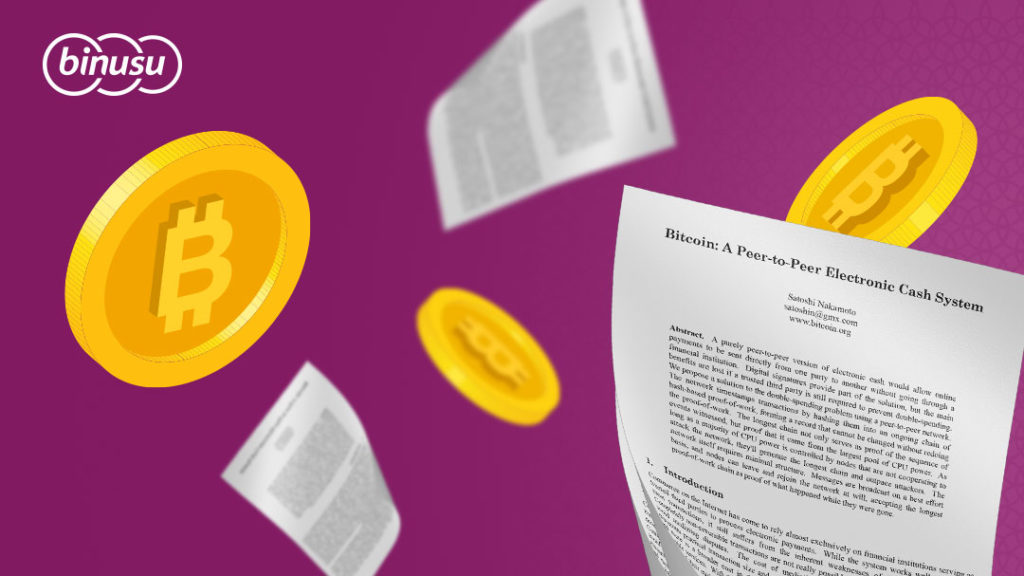Written By: Morris Gitonga | Marketing Lead, Binusu Kenya
As a brand authoritative in the crypto space, we keep our audience and community informed and if you missed our social media posts, we recently celebrated the Bitcoin whitepaper 15 years birthday. Yes! Bitcoin’s history is growing and we are here to inform you why you should care to read the Bitcoin whitepaper. In essence, the whitepaper will help you understand, what Bitcoin is all about, it’s significance in the current world and where we are headed as an ecosystem/industry. As we break down the technical jargons in the Bitcoin whitepaper, let’s find out what it comprises of and its significance.
Background
Let’s us first visit the background of the scenario leading to the birth and eruption of Bitcoin further leading to the development of an entire industry around the technology. In 2007- 2008, the world experienced a global financial crisis that sent economic meltdown shocks across the globe. As this financial crisis deepened governments in cahoots with leading financial firms and banks agreed on a bail plan in a move to cushion global economies but practically it’s the firms that were benefiting. If not, that was not enough, the bail-out compounded risks in the financial markets leading to the collapse of the housing market, followed by evictions, foreclosures, stock market began to plummet which resulted in many businesses closing. Millions of dollars were lost from the lost businesses affecting employment rates, reduced credit availability. Eventually, anger reached a fever pitch with many expressing this to the global banking industry, centralized entities and governments.
As this was happening conversations were happening online as early as 1992 where the discussions were aimed at introducing an electronic cash system that would solve global finance and bank systems problems. It is not until 31st October 2008, when a mysterious figure, Satoshi Nakamoto, published the now famous Bitcoin whitepaper on metzdowd.com (a cryptography mailing list). The Whitepaper is still available for download online and is titled it as Bitcoin: A Peer-to-Peer Electronic Cash System. Now let’s what in the whitepaper and why it’s important without going into technical details.
Normal Traditional Practice
It is common practice prior to the birth of Bitcoin, that people rely on intermediaries such as banks and PayPal to complete transactions involving money or anything of value. It is a system of trust to provide parties with certainty with record keeping and payment authentication. However, with the advent of the internet the need for intermediaries is acute because most people are now accustomed to digital transactions. Even though, the internet has made everything easy, it introduces other problems for instance, in the financial digital transactions, enters the problem of double spend. In simple terms, digital transactions involving money represent just like any other information that can be copied without moving of the actual money.
When you send currencies such as USD, KES, UGX or YEN, only the digital data that is sent and to complete the transaction there must be a system of trust introduced through the form of intermediaries to fulfil the actual sending of funds. It means were it not for banks that aid fulfilling of the transaction and we were relying on individuals to send these digital funds, the sender can only send the online figure but keep the original money which he or she can use countless times. This renders money useless through what is known as double spend problem.
As a counter measure of this double spend problem other issues arise when intermediaries are involved in financial systems such as increased costs, inability to initiate non-reversible transactions.
In the introduction of the Bitcoin whitepaper, Satoshi Nakamoto observes digital transactions heavily rely on intermediaries such as banks and other payment service providers such as PayPal. This is in attempt to solve the double spend problem which further compounds the problems encountered by end user. That is why Satoshi proposes a solution that solves the double spend problem through a system known as Bitcoin. The system allows people to transact or send direct electronic Bitcoin payments without involving costly and inconveniencing intermediaries.
“No mechanism exists to make payments over a communications channel without a trusted party. What is needed is an electronic payment system based on cryptographic proof instead of trust, allowing any two willing parties to transact directly with each other without the need for a trusted third party”. Satoshi Nakamoto
Quick Facts from the Bitcoin Whitepaper
Blockchain – a blockchain refers to a special distributed ledger that maintains an updated record of digital transactions. In the whitepaper, Satoshi describes the transactions as bitcoin transactions in what is known as the Bitcoin blockchain. This distributed ledger writes once read only database with data entered remaining immutable meaning, no editing or deletion. The blockchain eliminates the need for a centralized administrator such as banks and governments.
Overcoming Double Spend
The Bitcoin blockchain overcomes the double spend problem by publicly announcing all transactions to the network.
What is this Network?
The bitcoin blockchain runs or is operated through a number of computers knowns as Nodes that are spread all over the world (decentralized). Therefore, the ledger or data contained on the network runs on this huge network of computers.
How it works
- New transactions are publicly broadcasted to all computers in the decentralized network.
- Each node then collects new transactions and adds to a block of other previous transactions.
- The nodes then work on finding a difficult proof of work (a programmed mathematical problem) for its block.
- Upon working on the difficult proof of work, it then publicly broadcasts the block to all nodes.
- The network of nodes accepts only a new block if all transactions added are valid and not already spent.
- The participating nodes then move to the process of creating a block in the chain and repeat the process above again.
This way Satoshi summarizes that the double spend problem is solved in the following quote:
“The only way to confirm the absence of a transaction is to be aware of all transactions. In the mint based model, the mint was aware of all transactions and decided which arrived first. To accomplish this without a trusted party, transactions must be publicly announced”
Incentive in the Network
Bitcoin Mining – is a process by which the transactions in the Bitcoin network are verified and added onto the blockchain. It is also a process of adding new Bitcoins into circulation. The process entails a concept known as proof of work (PoW) which is a decentralized consensus mechanism (involving the nodes) and these network members expend effort and resources to solve a complex mathematical problem. This is also what is known as Bitcoin mining. The network members as per the Bitcoin whitepaper are incentivized to keep the network active and put off bad actors through Bitcoin rewards. The first transaction in a block after a participant/miner solves the puzzle gets to keep the Bitcoin. There is an additional incentive in transaction fees which still goes to the miners as reward of aiding the network to operate smoothly. There will be only 21 million Bitcoins created and in circulation and when this process of creating new Bitcoin comes to an end, the reward will only be in form of the transaction fees.
Privacy and Security
Understanding that transactions are publicly announced might have some people concerned about privacy and security issues of jumping onto Bitcoin. Contrasting to using centralized intermediaries to guarantee this privacy and security (which often can still be compromised by hackers) blockchain transactions use cryptography. This is an encryption technology that allows information to be kept secret and immutable on the network. Therefore, by design the Bitcoin transactions are pseudonymous.
What’s Next?
In the crypto space, it is important to undertake own research. First of all, identify a reputable exchange like Binusu.com, and we are different because we are always open to share important information on our communities and through such articles to enlighten and keep you informed. Further, even though brief, if you undertake own research, and read the Bitcoin whitepaper you will notice this is a genie already out of bottle, so no need to be left out!
To Buy or Sell Bitcoin; visit www.binusu.com
For more assistance, reach out to one of our agents on +256705972117 / +254724881003
Linkedin: https://www.linkedin.com/company/binusu/
Twitter: https://twitter.com/Binusu_official
Instagram: https://www.instagram.com/binusu_official/

